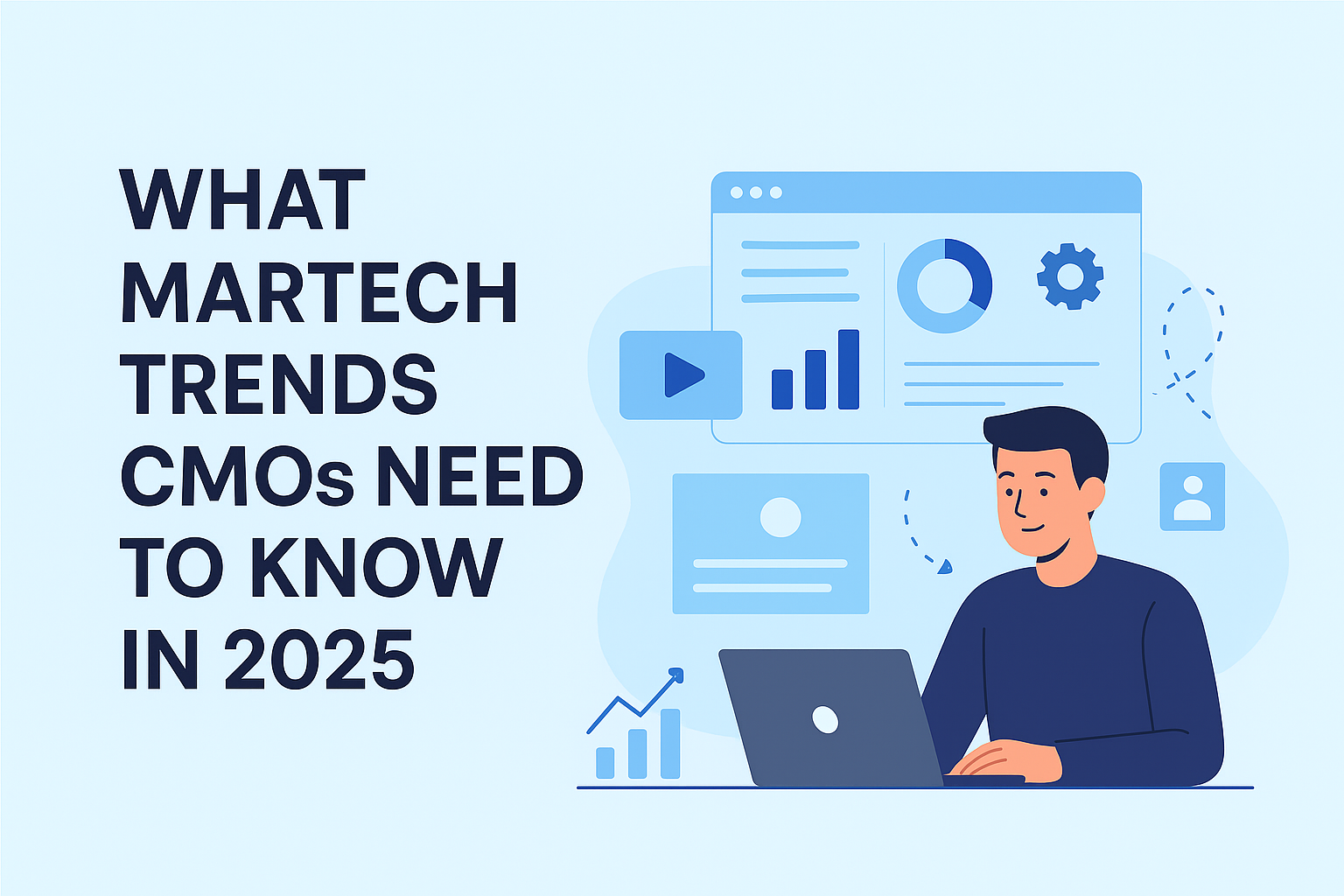
What Martech Trends Mean for the Modern CMO
Martech, or marketing technology, is no longer just about adopting tools; it’s about strategically integrating them into the customer experience journey. In 2025, Martech is the nerve center of data-driven decision-making, customer engagement, and campaign optimization.
For CMOs, understanding Martech trends isn’t simply about keeping up; it’s about anticipating shifts in consumer behavior, preparing teams for rapid adoption, and ensuring Martech Implementation aligns with overarching business objectives. The right approach can turn marketing departments from cost centers into measurable revenue drivers.
How Martech in 2025 is Reshaping Marketing Operations
The Martech landscape is now dominated by AI-powered personalization, predictive analytics, and unified customer data platforms (CDPs). CMOs must ensure that their marketing technology stack is not only extensive but also cohesive.
Key shifts in 2025 include:
- Predictive and Generative AI: Automating content creation, A/B testing, and campaign targeting.
- Composable Martech Stacks: Modular systems allowing seamless integrations without full platform overhauls.
- Real-Time Analytics: No more waiting for monthly reports—decisions are now made in minutes, not weeks.
With Product Siddha’s Martech Implementation expertise, companies can align these technologies with strategic goals, avoiding costly integration mistakes.
Why CMOs Cannot Ignore Martech Trends
A CMO’s role is no longer limited to brand storytelling, it now requires deep technical understanding. The consequences of ignoring emerging Martech trends include:
- Lost market share due to slow adoption of automation and AI.
- Wasted ad spend from ineffective targeting.
- Disconnected customer journeys from poor data integration.
In 2025, brands that embrace forward-thinking Martech Implementation will lead in personalization, predictive engagement, and operational efficiency.
Martech Adoption by Industry in 2025
| Industry | Adoption Rate (%) | Top Use Case |
| E-commerce | 92% | Personalization & dynamic pricing |
| Healthcare | 78% | Patient engagement automation |
| Financial Services | 85% | Fraud detection & advisory services |
| B2B SaaS | 88% | Predictive lead scoring & ABM |
Who Benefits Most from Martech Implementation
While every department benefits from improved marketing technologies, in 2025 the primary beneficiaries include:
- Marketing Teams: Faster campaign deployment and higher ROI tracking.
- Sales Teams: Warmer leads and higher conversion rates.
- Customer Service: Real-time responses and self-service options powered by AI.
- C-Suite Executives: Improved decision-making through unified reporting dashboards.
Product Siddha ensures Martech Implementation benefits cross-functional teams, maximizing the value from every tool in the stack.
When to Upgrade Your Martech Stack
Many organizations hold on to outdated systems, but waiting too long can slow growth. Signs it’s time to modernize include:
- Difficulty integrating new platforms.
- Reliance on manual processes for campaign management.
- Lack of real-time customer insights.
- Declining engagement despite consistent campaign activity.
In 2025, the average Martech stack lifecycle has shortened to 2–3 years, meaning CMOs must proactively plan upgrades.
How to Future-Proof Your Martech Implementation
Future-proofing means building a Martech stack that can scale, adapt, and integrate with emerging tools. CMOs should:
- Adopt a Composable Architecture: Flexible systems reduce vendor lock-in and speed up deployment.
- Prioritize Interoperability: Ensure data flows seamlessly between platforms.
- Leverage AI for Predictive Decision-Making: Move from reactive to proactive campaign planning.
- Train Teams Continuously: Technology adoption is only as strong as the people using it.
Advantages of Keeping Up with Martech Trends
- Competitive Edge: Early adoption means stronger brand visibility and loyalty.
- Cost Efficiency: Automation reduces operational costs.
- Customer Retention: Personalization fosters brand trust and repeat engagement.
- Scalable Growth: Martech Implementation enables expansion into new markets without proportionate increases in overhead.
Case: Service-Based Business Growth with Martech
A mid-sized B2B service provider wanted to scale without drastically increasing marketing spend. They partnered with Product Siddha to implement a modular Martech stack tailored to their goals, combining automation, advanced analytics, CRM integration, and AI-driven audience segmentation.
Before Martech Implementation:
- Campaign launches required 2–3 weeks of manual setup across multiple tools.
- Sales and marketing teams worked from disconnected data sources, leading to slow decision-making.
- Audience targeting relied heavily on broad demographic filters, resulting in wasted ad spend.
After Product Siddha’s Martech Implementation:
- 34% Improvement in Lead Conversion Rates:
Example: By integrating the CRM with marketing automation, follow-up emails were sent within minutes of a prospect filling out a form. Personalization, based on industry, service interest, and engagement history, resulted in warmer leads and faster conversions. - 50% Reduction in Campaign Deployment Times:
Example: Instead of manually setting up campaigns in multiple ad platforms, a centralized dashboard allowed the marketing team to launch coordinated campaigns across email, social, and paid ads in 3–4 days instead of 2–3 weeks. - 28% Lower Customer Acquisition Cost (CAC):
Example: AI-powered audience targeting identified high-value micro-segments, such as decision-makers in specific industries with past engagement history, reducing wasted spend on low-quality clicks.
Why This Matters for Service-Based Businesses:
This transformation shows how Martech isn’t just a “nice-to-have” but a strategic growth driver. By streamlining workflows and enabling precision targeting, service providers can grow faster, spend less, and deliver more personalized experiences to clients.
Martech Trends Checklist for CMOs in 2025
| Trend | Adoption Priority | Impact Level | Implementation Tip |
| AI-powered personalization | High | Very High | Integrate with CRM and CDP systems |
| Predictive analytics | High | High | Use for demand forecasting |
| Composable tech stacks | Medium | High | Start with critical marketing workflows |
| Voice and conversational AI | Medium | Medium | Deploy for customer support automation |
| Real-time data visualization | High | High | Enable for cross-departmental dashboards |
Reflecting on Martech in 2025
For CMOs, Martech is not just a toolkit, it’s the foundation of competitive marketing in a fast-paced, data-driven world. In 2025, leaders who understand and implement these trends will drive exponential brand growth, elevate customer experiences, and position their companies as industry frontrunners.
With Product Siddha’s Martech Implementation expertise, businesses can transition smoothly into this next era of marketing, ensuring that every technology investment delivers measurable results.
